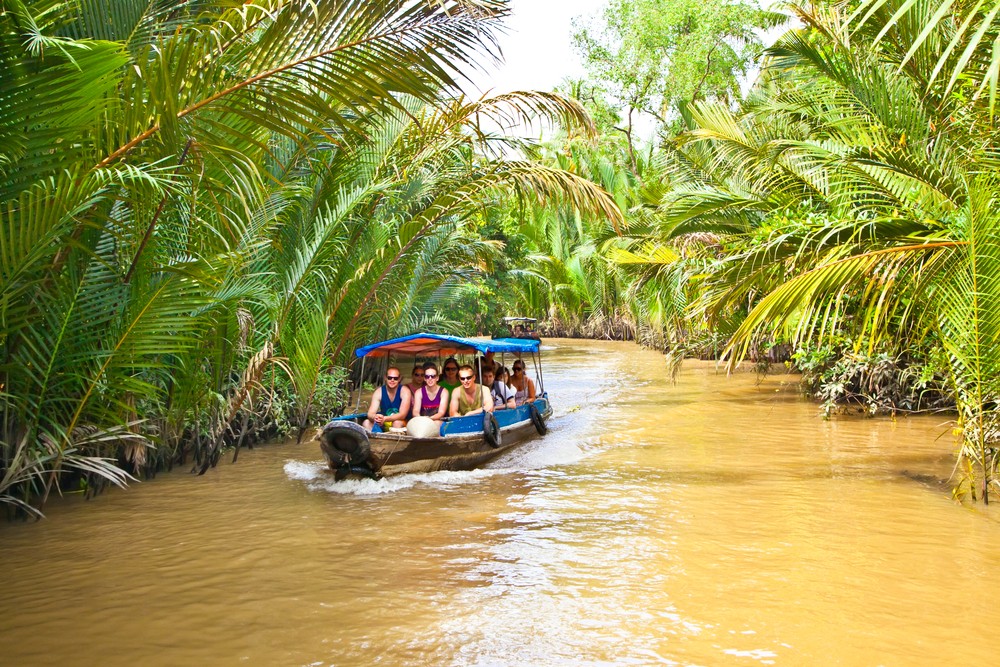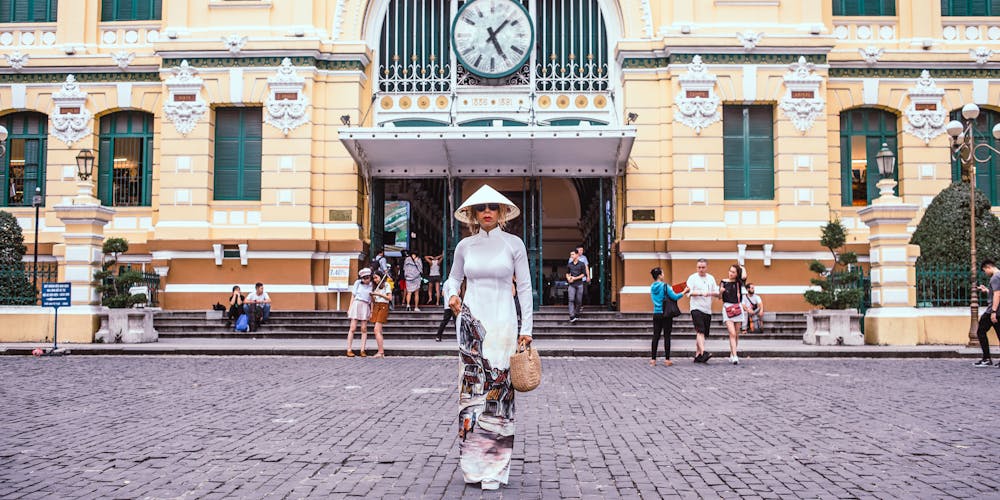Welcome to your comprehensive Guide to Northern Vietnam, where we’ll take you through an extraordinary journey across this magnificent region. Northern Vietnam boasts a unique character that starkly contrasts with its southern counterpart, offering breathtaking landscapes, rich cultural diversity, and captivating historical narratives. Get ready to explore soaring mountains, cascading rice terraces, and charming villages inhabited by various ethnic minorities.
About Northern Vietnam
Northern Vietnam is a realm filled with contrasts and complexities shaped by its unique history and geography. The cultural fabric of the north is deeply woven with influences from China, reflected in its architecture, cuisine, and local traditions. This region embraces various ethnic groups, each contributing to the vibrant cultural tapestry.
Cultural Divergence: North vs. South
In understanding Northern Vietnam, one must first consider its cultural divergences from the South. Residents here often perceive themselves as distinct and culturally rich compared to their compatriots in the south. With a stronger influence from China, you’ll find Chinese-style temples, hearty noodle dishes like pho, and a dialect that holds echoes of Chinese phonetics.
The political history of the North is equally fascinating. After the French Indochina’s disintegration in 1954, the North sought to establish a communist state, a dream realized after the conclusion of the American War in 1973. Thus, Hanoi emerged as not just the political capital but also as a cultural beacon contrasting the commercial dynamism of Ho Chi Minh City in the south.
Geography and Climate: A Dramatic Landscape
Dramatic mountainous terrains, lush rice paddies, and winding rivers characterize the geographical layout of Northern Vietnam. The weather can be unpredictable, with mild winters in cities like Hanoi, where temperatures can dip to around 15°C (60°F) during December and January. On the other hand, areas further north, such as Sapa and Ha Giang, may even experience snowfall, creating a winter wonderland that contrasts sharply with the tropical climate of the south.
With its diverse microclimates, choosing the right time to visit Northern Vietnam can enhance your experience. Whether you are hiking in the hills or exploring vibrant markets, understanding these climatic variations will help you plan better.
A Melting Pot of Ethnic Diversity
Northern Vietnam remains home to an impressive variety of ethnic minorities, each with its customs, clothing, and languages. In places like Sapa and Mai Chau, you’ll observe the colorful traditional attire worn by different tribes, making the landscape visually stunning and culturally rich.
The sense of community among these hill tribes is quite remarkable. Their daily lives revolve around agriculture, handicrafts, and market trading, which offers authentic insights into the lives of the people living off the land. Engaging with these communities gives travelers a deeper appreciation for their resilience and artistry.
When to Visit
Timing your trip to Northern Vietnam can significantly impact your experience. Given its long stretch of land, the region possesses multiple microclimates, each offering a unique experience based on the season.
Spring Awakening: March to May
If you’re looking for ideal weather conditions to enjoy the stunning landscapes, mid-spring to early summer (March to May) is undoubtedly the best time to visit. Picture yourself strolling through terraced rice fields adorned in shades of green under a pleasantly warm sun. You can expect moderate temperatures and little rainfall during this period, making hikes and outdoor activities more enjoyable.
This is also an excellent time to witness the blooming flowers and lush greenery that envelop the valleys, enhancing the natural beauty of Northern Vietnam. Various trekking routes become accessible, inviting adventurers to take scenic walks through picturesque villages and emerald paddies.
Chilly Winters: December to February
While many flock to warmer climates during winter, those adventurous enough to brave the chilly temperatures can discover a side of Northern Vietnam that is enchanting in its own right. From December to February, cities like Hanoi and Halong Bay experience cooler temperatures, hovering around 15°C (60°F).
The mountainous regions, including Sapa and Ha Giang, can even turn into a winter wonderland, with some spots receiving light snowfall. This rare phenomenon offers a unique opportunity to explore the northern highlands in a serene, less crowded atmosphere, perfect for solitude-seeking travelers.
Flower Festivals and Local Celebrations
Visiting Northern Vietnam during specific festival seasons can enrich your cultural experience. Many local festivals correspond with the lunar calendar, celebrating everything from rice harvests to traditional holidays. For instance, the Hmong Lunar New Year, celebrated in January or February, showcases vibrant costumes, ethnic dances, and loud festivities, immersing visitors in the local culture.
Timing your visit to attend these festivals can allow you to actively engage with the local communities. The hospitality of the northern tribes is heartwarming, and experiencing their celebrations offers a glimpse into their rich traditions while forging unforgettable memories.
Hanoi Halong Bay
Your adventure in Northern Vietnam most likely begins in Hanoi, the nation’s capital. This city juxtaposes modernity and tradition, where bustling street life coexists with remnants of colonial history.
The Heartbeat of Hanoi
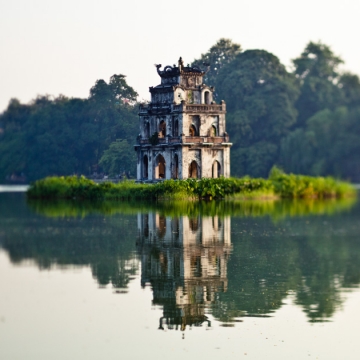
Hanoi stands out as a cultural hub, teeming with energy and vitality. The Old Quarter, with its narrow streets and ancient buildings, vividly encapsulates the city’s spirit. Here, artisans practice their craft, street vendors offer mouthwatering delicacies, and tourists mingle with locals, making it a lively place to explore.
The city’s highlights include historic sites such as Hoan Kiem Lake, where residents exercise and socialize, and the Temple of Literature, Vietnam’s first university. Every corner of Hanoi reveals layers of history and culture, making it easy to lose track of time while wandering through its streets.
Culinary Delights: The Flavors of Hanoi
No visit to Hanoi would be complete without indulging in its delectable cuisine. The city is a food lover’s paradise, offering a tantalizing array of dishes that reflect its cultural influences. Every meal is a culinary journey from the iconic pho to the crispy banh xeo (Vietnamese pancakes).
Street food stalls lining the streets provide an authentic dining experience. Be sure to sample bun cha, grilled pork served over vermicelli noodles, and egg coffee, a unique concoction that has garnered international attention. Exploring these flavors brings a rich dimension to your travel experience, revealing the depth of Vietnamese culinary traditions.
Ha Long Bay: Nature’s Masterpiece
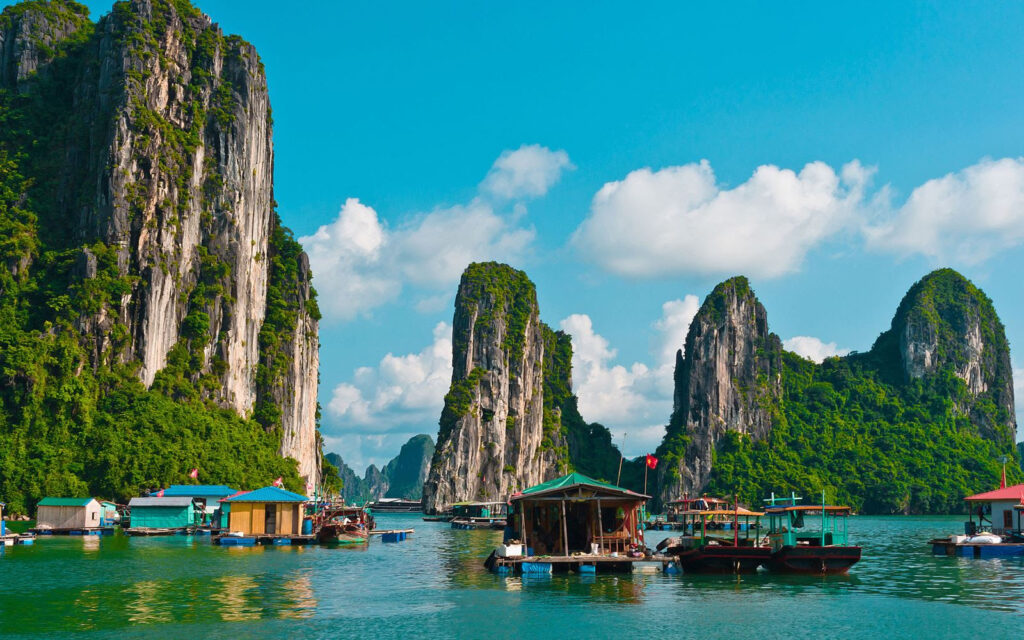
From the bustling streets of Hanoi, a short journey leads you to Ha Long Bay, a UNESCO World Heritage Site renowned for its stunning limestone karsts and emerald waters. While the bay itself is a major tourist attraction, it also offers alternative experiences that can help you escape the crowds.
Luxury cruises navigate through the breathtaking scenery, providing both relaxation and exploration. However, seeking out lesser-known areas like Bai Tu Long Bay or Lan Ha Bay allows you to enjoy the same striking beauty with fewer tourists. Kayaking, swimming, and hiking in these serene waters enables you to connect with nature on a more intimate level.
Viet Nam is also an amazing destination for a romantic and unforgettable honeymoon in Vietnam. With its stunning natural beauty, from Ha Long Bay’s limestone cliffs to the white sandy beaches of Phu Quoc, the country offers the perfect blend of adventure and relaxation. Whether exploring charming ancient towns, indulging in world-class cuisine, or enjoying a luxury resort, Vietnam has everything for a dream honeymoon
Rural Escapes
For travelers craving tranquility amid the picturesque landscapes, Northern Vietnam’s rural escapes offer an idyllic retreat from the hustle and bustle of city life.
Ninh Binh: Halong Bay on Land
Just a few hours south of Hanoi lies the Ninh Binh region, often dubbed “Halong Bay on Land.” Here, karst formations rise majestically from the ground, creating a stunning backdrop for exploration. Boating through the canals of Tam Coc, surrounded by towering limestone cliffs, is a magical experience that rivals Ha Long Bay in beauty.
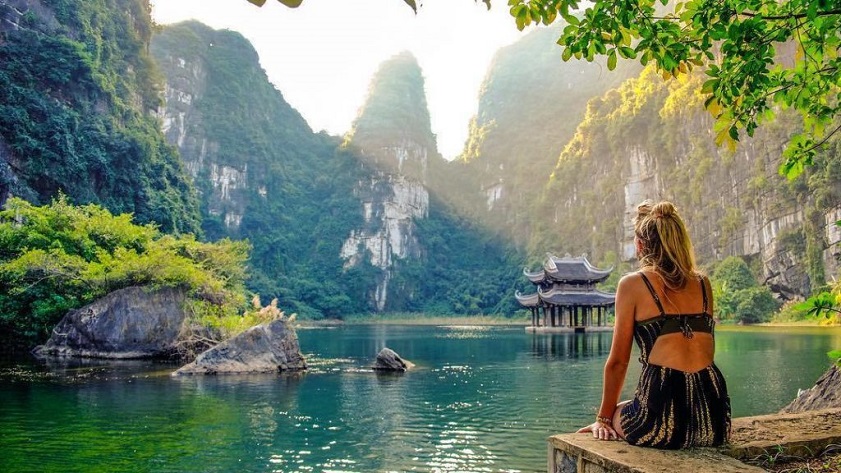
The region is rich in history and culture, with ancient temples and pagodas dotting the landscape. Notable sites like Bich Dong Pagoda and Hang Mua offer glimpses into the area’s spiritual heritage. Taking the time to explore Ninh Binh is highly recommended, as it showcases the rugged beauty of the north and provides opportunities for hiking and cycling through lush rice fields.
Pu Luong: A Hidden Gem
Further west, Pu Luong is a protected nature reserve that appears almost untouched by time. Its emerald rice terraces, small streams, and rolling hills create a postcard-perfect setting. The area is home to several hill tribes, offering a chance to immerse yourself in the local culture.
Engaging in trekking and rafting allows an adventurous escape into the breathtaking landscapes. Villagers welcome visitors warmly, eager to share their livelihoods through farming, weaving, and traditional ceremonies. The slow pace of life in Pu Luong presents a unique opportunity to disconnect from the outside world and reconnect with nature.
Mai Chau: An Authentic Experience
Not far from Hanoi, the lush valleys of Mai Chau offer another enchanting rural escape. Known for its stunning rice fields and friendly communities, it’s a favored destination for those wishing to experience Vietnam’s rural lifestyle. Traditional stilt houses and the vibrant colors of ethnic costumes create a captivating ambiance.
Trekking through the valleys allows visitors to interact with the local tribes, learn about their customs, and savor traditional meals made with fresh ingredients. The region’s weekly markets are particularly vibrant, showcasing local produce and crafts, making them a perfect spot for souvenir hunting.
Far Northern Highlands
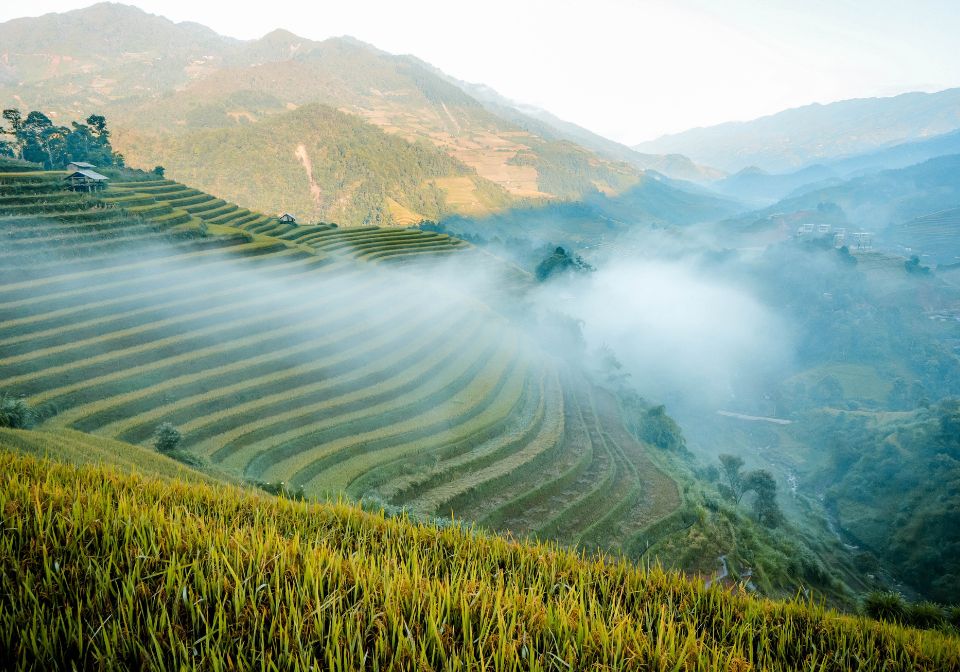
The Far Northern Highlands of Vietnam represent one of the last frontiers for intrepid travelers. This remote area, characterized by rugged mountains and breathtaking vistas, offers a truly immersive experience in the heart of Vietnam’s natural beauty.
Sapa: Gateway to Adventure
Sapa is the gateway to the northern highlands, drawing adventurers eager to explore its stunning landscapes and diverse cultures. Getting there via an overnight train journey adds a layer of excitement to your adventure. Upon arrival, the cool mountain air and panoramic views will mesmerize you.
With its extensive trekking routes, Sapa is a hiker’s paradise. Trails wind through terraced rice fields, scenic valleys, and towering peaks, rewarding hikers with spectacular views. The allure of Mt. Fansipan, the highest peak in Vietnam, beckons those seeking a challenge, with cable cars making the ascent more accessible for casual explorers.
Ha Giang Loop: A Journey Off the Beaten Path
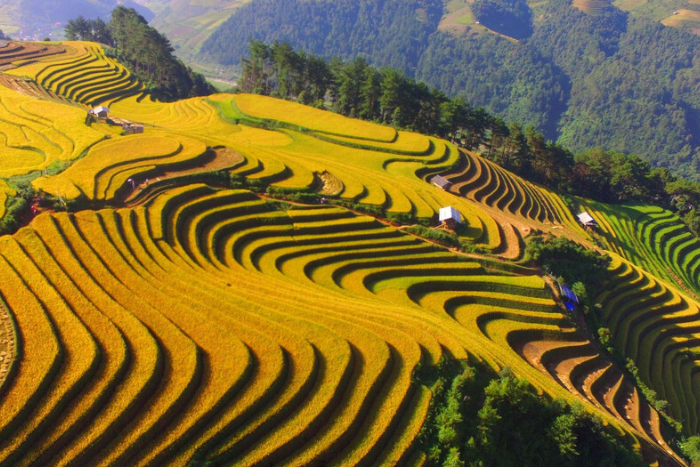
For those willing to venture further afield, the Ha Giang Loop is a thrilling itinerary that unveils some of the most awe-inspiring landscapes in Vietnam. Motorbiking through this loop allows travelers to witness breathtaking mountain passes, terraced fields, and quaint villages.
Motorbike rental shops abound, and many opt for guided tours to navigate the winding roads safely. The journey introduces you to a plethora of ethnic groups, each group distinct in their customs and traditions. The warmth of the locals, combined with the untouched beauty of the region, creates an unforgettable experience for any traveler.
Cao Bang: Nature’s Beauty
Cao Bang, located near the Chinese border, is another hidden gem in the northern highlands. Home to Ban Gioc Waterfall, one of the largest waterfalls in Asia, this area enchants visitors with its natural beauty. The sight of cascading water against the backdrop of lush greenery is breathtaking.
Beyond the waterfall, Cao Bang offers exciting trekking opportunities in the vast national parks surrounding it. Explore ancient caves adorned with stalactites and stalagmites and learn about the rich biodiversity of this pristine environment. The serenity of Cao Bang makes it an ideal location for those looking to immerse themselves in nature.
Tribal Villages
Northern Vietnam is recognized for its rich tapestry of cultural diversity, and nowhere is this more evident than in its tribal villages. As you venture into the hills, you’ll encounter vibrant communities and intriguing lifestyles that offer insight into the country’s indigenous populations.
Meeting the Ethnic Tribes
Traveling through Northern Vietnam allows you to meet various ethnic tribes, each possessing a unique identity. The Hmong, Tay, Dao, and Nung people are just a few of the groups you might encounter. Each tribe has its own customs, dialects, and traditional garments, making interactions with them genuinely enriching.
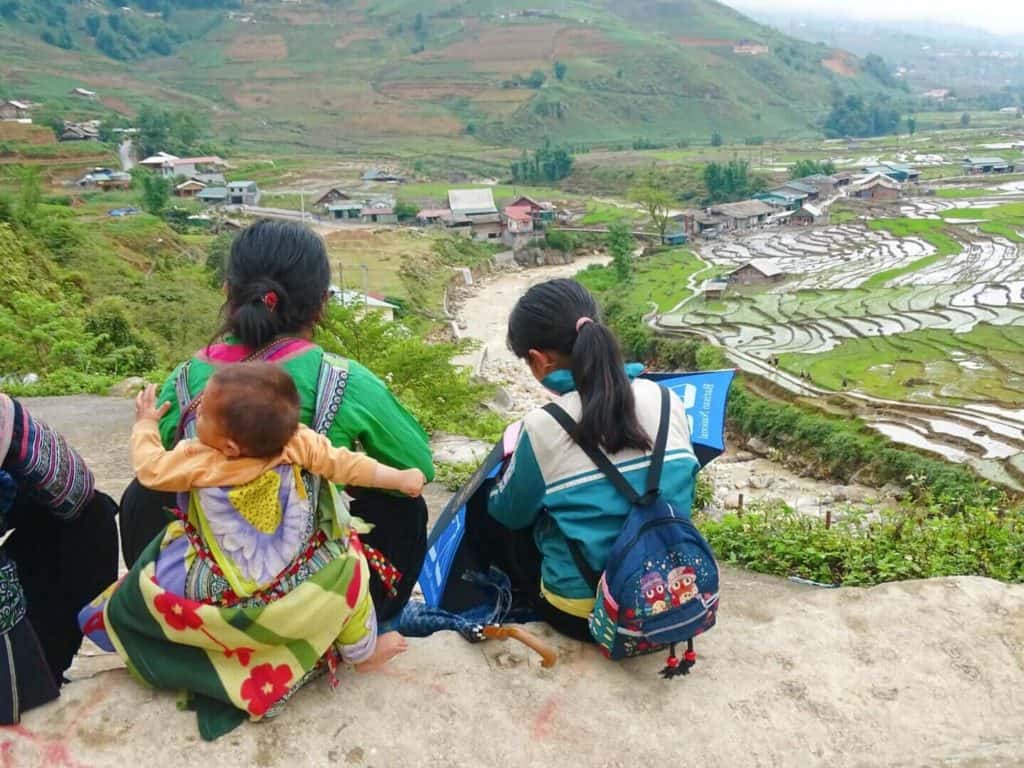
Village treks are highly recommended, offering personal encounters with locals. These hikes allow you to witness their daily lives, including farming practices and artisanal crafts. Sharing stories and participating in local customs fosters a connection, creating lasting memories that transcend cultural boundaries.
Weekly Markets: A Vibrant Hub
One of the most exciting ways to experience the local culture is by visiting the colorful weekly markets held in various villages. These markets serve as gathering places for different ethnic groups, who come to trade goods ranging from handmade textiles to fresh produce.
The vibrant atmosphere is filled with the sounds of bartering, laughter, and traditional music, creating an exhilarating sensory experience. It’s an excellent opportunity to buy unique souvenirs while supporting local communities. Additionally, you’ll get to taste delicious local cuisine, adding a gastronomic layer to your cultural exploration.
Preserving Traditions in a Modern World
As Northern Vietnam becomes increasingly popular with tourists, there’s a growing awareness of the need to preserve the cultural heritage of its ethnic tribes. Many communities are working to maintain their traditions while adapting to changing circumstances.
By engaging with these communities as a traveler, you play a vital role in sustaining their way of life. Participating in homestays or village tours encourages cultural exchange and ensures the preservation of their unique customs for future generations. Supporting local businesses and artisans helps foster economic growth while respecting their traditions.
Hiking
Hiking in Northern Vietnam is an adventure that goes beyond simply enjoying the breathtaking views; it offers a profound connection to nature and an opportunity to engage with local cultures.
Scenic Trails Await
The north is blessed with many hiking trails that traverse its stunning landscapes. From the terraced rice fields of Sapa to the misty mountains of Ha Giang, each route provides a unique perspective on the region’s natural beauty.
As you hike through these trails, be prepared to encounter diverse flora and fauna. Depending on the season, you may witness blooming wildflowers or golden rice paddies ready for harvest. The ever-changing scenery keeps the experience fresh and invigorating at every turn.
The Joy of Guided Treks
While independent hiking is possible, joining a guided trek can enhance your experience significantly. Knowledgeable guides provide insights into the area’s ecosystem, cultural significance, and historical context, deepening your appreciation of the surroundings.
Guided treks often include visits to local villages along the route, allowing for authentic cultural exchanges. You’ll have the chance to interact with villagers, learn about their traditions, and even participate in daily activities. This immersive approach transforms a hike into a multi-faceted adventure.
A Place for Reflection
Hiking in Northern Vietnam also offers moments of solitude and reflection. As you ascend mountains or traverse peaceful valleys, the tranquility of your surroundings can create an opportunity for introspection. The stunning vistas and serene environments encourage a deeper connection to nature and a break from the fast-paced world outside.
Whether you’re a seasoned hiker or a novice, each step taken along these trails reveals a new layer of beauty and discovery. Embrace the journey, soak in the sights, and cherish the memories forged by exploring this magnificent region.
Cruises
Exploring Northern Vietnam isn’t limited to land-based adventures; cruising through its beautiful waterways offers a unique perspective on the region’s natural wonders and cultural heritage.
Halong Bay Cruises: Unveiling Hidden Gems
Ha Long Bay is undoubtedly the crown jewel of Vietnam’s cruise destinations. Luxury cruises glide through the region’s famous limestone islands, unveiling breathtaking scenery and serene waters. Whether you opt for a day cruise or an overnight stay, the experience promises to be unforgettable.
While many tourists flock to the standard routes, seeking alternative cruises in lesser-known bays like Bai Tu Long or Lan Ha can provide a more intimate experience. These areas showcase similar stunning landscapes without the crowds, allowing for peaceful exploration.
Activities Onboard and Ashore
Cruising in Northern Vietnam offers various activities to indulge in. Onboard, you can participate in cooking classes and tai chi sessions or unwind on deck while soaking in the scenery. As you sail between islands, the ever-changing vistas ensure delightful photo opportunities.
Shore excursions enhance the experience with the chance to kayak, swim, or visit fishing villages. Engaging with local fishermen and learning about their way of life fosters a deeper understanding of the culture. As you explore the islands, watch for remarkable rock formations and hidden caves waiting to be discovered.
Eco-Friendly Cruising
As tourism continues to grow, there is an increasing focus on sustainable practices. Many cruise operators are adopting eco-friendly initiatives to minimize environmental impacts. Consider choosing cruises that prioritize responsible tourism—those emphasizing conservation efforts and respect for local communities.
By supporting eco-conscious cruises, you preserve Northern Vietnam’s natural beauty and cultural integrity. Choose operators committed to sustainability, ensuring that your journey positively impacts both the environment and the local people.
Our Favorite Hotels
Finding the perfect accommodation enhances your travel experience, providing comfort and convenience amidst your adventures in Northern Vietnam. Here are some of our top hotel picks for travelers seeking unique stays.
Boutique Hotels in Hanoi
In Hanoi, boutique hotels offer an ideal base for exploration. Places like the Hotel de l’Opera blend modern luxury and historical charm. Located in the city’s heart, it’s within walking distance of major attractions and vibrant street life.
For a more traditional experience, consider staying in a homestay or guesthouse in the Old Quarter. Interacting with local hosts provides a genuine glimpse into their daily lives while enjoying the comforts of home.
Stunning Resorts in Halong Bay
When venturing to Ha Long Bay, indulging in a luxurious resort experience is a must. Many resorts offer stunning views of the bay, where waking up to sunrise illuminating the limestone cliffs is pure magic.
Consider opting for a floating hotel surrounded by the tranquil waters of the bay for a unique twist. These accommodations often feature private balconies, exquisite dining options, and personalized service, creating an unforgettable getaway.
Rustic Retreats in the Highlands
For a more rustic experience, head to the highlands and choose accommodations that embrace the region’s natural beauty. Eco-lodges and bungalows nestled among rice terraces present a serene escape, allowing guests to wake up to the sound of nature.
Staying in local homestays in villages like Sapa supports the community and provides insight into their culture. You’ll fall asleep to the stars above and awaken to the breathtaking views surrounding you.
Recommended Itineraries
Planning your trip to Northern Vietnam can be overwhelming, given the abundance of experiences available. Here’s a suggested itinerary to maximize your adventure while ensuring you capture the region’s essence.
Classic Northern Vietnam Itinerary
A classic itinerary could begin with a few days in Hanoi, allowing you to soak in the city’s vibrant culture and rich history. Follow this with a two-day cruise in Ha Long Bay, exploring its stunning landscapes before returning to the mainland.
Next, venture to Ninh Binh for a few days, taking in the breathtaking views and boating through its unique landscapes. Afterward, head to Sapa to embark on unforgettable treks through the highlands, culminating in a visit to the hill tribes.
Off-the-Beaten-Path Adventure
For those seeking a deeper exploration, consider an off-the-beaten-path itinerary. After discovering Hanoi, embark on a journey towards Ha Giang, tackling the Ha Giang Loop for incredible mountain scenery and encounters with ethnic tribes.
You can spend a few days in Cao Bang, visiting Ban Gioc Waterfall and exploring the area’s natural wonders before concluding your trip back to Hanoi. This itinerary caters to adventurous souls eager to connect with nature and local communities.
Family-Friendly Exploration
Traveling with family? Tailor your journey to suit all ages. Begin with a family-friendly stay in Hanoi, incorporating fun activities like cooking classes or exploring the bustling night market.
Then, find a cruise option in Ha Long Bay that offers kid-friendly amenities and excursions. This is followed by visits to rural retreats in Mai Chau or Ninh Binh, which provide opportunities for family bonding through hiking and nature exploration.
Ready to Plan Your Trip?
Embracing the wonders of Northern Vietnam requires planning, but the effort is well worth it. This enchanting region invites travelers to experience its rich culture, breathtaking landscapes, and warm-hearted communities.
Research your destinations, determine the best time to visit, and choose accommodations that resonate with your travel style. Understanding what to expect will enhance your journey, enabling you to fully embrace the magic of Northern Vietnam.
Contact local tour operators or travel experts who can assist in crafting the perfect itinerary tailored to your preferences. Embrace spontaneity while allowing ample exploration time, ensuring a well-rounded experience steeped in adventure and connection.
Conclusion
In conclusion, Northern Vietnam is a treasure trove of experiences waiting to be uncovered. Through our Guide to Northern Vietnam, we hope you’ve gathered valuable insights into the region’s diverse offerings—from the vibrant streets of Hanoi to the tranquil waters of Ha Long Bay, the picturesque rural escapes, and the mesmerizing highlands.
Each step taken in Northern Vietnam reveals a story, whether through the whispers of the mountains, the laughter of local villagers, or the vibrant colors of ethnic markets. This region not only captivates with its natural beauty but also nourishes the soul through cultural engagement and connection.
As you prepare for your journey, remember that Northern Vietnam is not just a destination—it’s a collection of experiences, emotions, and discoveries waiting to unfold. So pack your bags, embrace the adventure ahead, and let the enchanting landscapes and warm-hearted people of Northern Vietnam leave a lasting impression on your heart.

